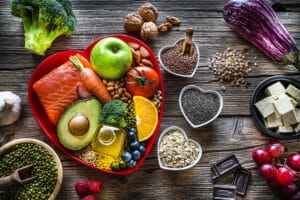We’ve all heard the saying “an apple a day keeps the doctor away”, but according to new research conducted in the Netherlands eating an apple a day might indeed reduce the risk of a stroke by more than 50%.
According to the study, which explored the link between the color of the fruit and vegetables that we consume and the likelihood of having a stroke, eating high levels of fruits or vegetables with white flesh, such as apples, pears, bananas, cauliflower, chicory, and cucumber, can significantly reduce the risk of having a stroke.
What Did the Study Show?
The study was undertaken at Wageningen University in the Netherlands over a ten year period and the results were published in the journal Stroke. The aim of the study was to see if there was a link between fruit and vegetable color and stroke risk, because the color of fruit and vegetable flesh can often be a clue as to the type of phytochemicals or antioxidants that it contains, and these may play a protective role against cardiovascular disease.
The study included 20,069 participants with an average age of 41, who had all completed a 178 item food frequency questionnaire, and who had no previous history of cardiovascular disease. The researchers grouped fruits and vegetables into four categories:
- Dark green leafy vegetables such as cabbages and lettuce
- Orange and yellow items which were mainly citrus fruits
- Red and purple items which were mainly red vegetables
- White items, of which apples and pears made up around 55%
The amount of each category that every participant consumed was recorded and participants were classified as eating a high or low level of each category. The participants were then followed for a ten year period, during which time 233 of them suffered from a stroke.
The results of the study were very clear in that there was no observable decrease in the risk of stroke in people that ate high levels of green, orange, or red fruits and vegetables, but that there was a staggering 52% decrease in risk of stroke in people that ate high levels of white fruits and vegetables, compared to those that only consumed low levels.
The researchers observed that the risk of having a stroke decreased by 9% for every 25g of white fruit or vegetable flesh consumed each day. To put that in context, an average apple weighs 120g, so eating an apple every day could have an enormous impact on stroke risk.
The researchers aren’t certain why white fruit and vegetables have such an impact on stroke risk, although they suggest it may be linked to the high levels of the flavonoid quercetin in apples and pears, or the high levels of dietary fiber they contain.
The lead author of the study, Linda Oude Griep, who is a postdoctoral fellow in human nutrition at Wageningen University, believes that, “To prevent stroke, it may be useful to consume considerable amounts of white fruits and vegetables. For example, eating one apple a day is an easy way to increase white fruits and vegetable intake. However, other fruits and vegetable color groups may protect against other chronic diseases. Therefore, it remains of importance to consume a lot of fruits and vegetables.”




